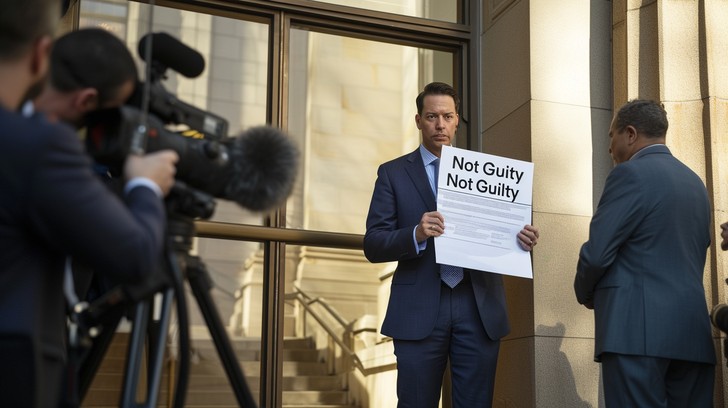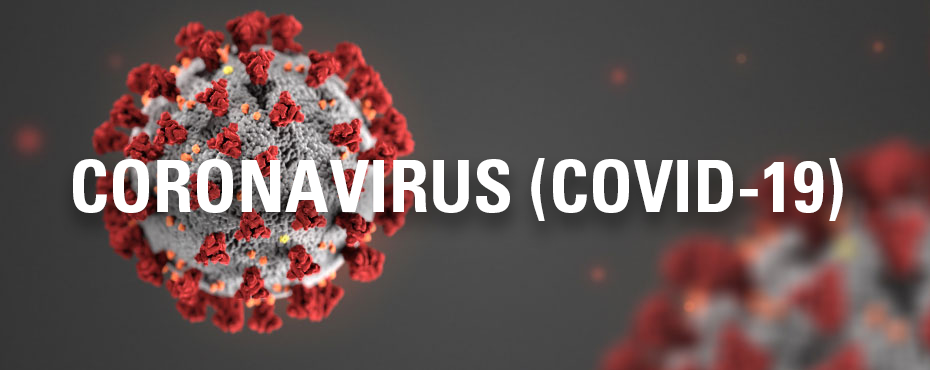Now Reading: The Relevant Market In Automobile Aftersales: Is It Time To Re Look At The Shamsher Kataria Order?
-
01
The Relevant Market In Automobile Aftersales: Is It Time To Re Look At The Shamsher Kataria Order?

The Relevant Market In Automobile Aftersales: Is It Time To Re Look At The Shamsher Kataria Order?
Introduction and focus of the article
The determination of a relevant market is the central pivot around which all competition law jurisprudence is built. Without determining the relevant market, it would not be possible to attribute possible anti-competitive behaviour to a firm. Therefore, the natural corollary to the above statements is that The Competition Commission of India (the “CCI”) while coming to a conclusion in a case, has to be sure that it has properly evaluated the playing field, considered all substitutes, both demand side and supply side and only then attribute possible liability to the firm or firms in question.
The tests for determining the relevant market in the primary/fore markets are well established. One such test widely used is the SSNIP. This test is used by various authorities in arriving at the correct conclusion. However, the purpose of this article is not to evaluate the rightful determination of the relevant market in the primary/fore market rather, this article will be restricted in evaluating the tests and conclusions relied upon by the CCI in the case of Shamsher Kataria v. Honda Siel Cars India Ltd & Others[1] and whether the determination of the relevant market for the – automobile aftersales market/aftermarkets is acceptable.
Brief and relevant facts of the Shamsher Kataria case
The CCI in Case No. 03/2011, passed an order in the Shamsher Kataria case holding some 17 Opposite Party firms such as Honda, Volkswagen, BMW, Ford, Maruti and Mercedes – Benz among others guilty of anti-competitive behaviour. The CCI observed that each of the 17 Opposite Party firms held a monopoly in the aftermarket of their goods in the corresponding primary market. For instance, suppose firm ‘A’ produces car ‘X’, the CCI observed that the firm ‘A’ had a monopoly in the aftermarket sales of the car ‘X’. The CCI classified aftermarket sales into two categories. They are:
- The sale of spare parts to the cars bought by the consumers in the primary/fore market
- The supply of repair or maintenance services to the cars bought by the consumers in the primary/fore market.
The CCI observed that each of the 17 firms had an absolute monopoly over the after sale market, though only supplemental to the corresponding product they sold in the corresponding primary market. The CCI held that the conduct of the Opposite Party firms in the after markets was contrary to section 3 and 4 of the Competition Act, 2002.
The CCI relied upon the reasoning of the United States Supreme Court in Eastman Kodak Co v. Image Technical Services, Inc., ET AL,[2]to arrive at the conclusion that the said 17 firms were abusing their dominant position and restricting trade and competition. The CCI, like the majority judgement of the United States Supreme Court, used the Harvard Per se approach in determining anti-competitive behaviour of the 17 firms before it. According to the reasoning of the CCI, the mere fact that the firms were having a near absolute monopoly, market share wise, in their own aftersales market, is suggestive of the conclusion that they are acting in an anti-competitive manner by abusing their dominance and restricting trade and competition.
Issues and contentions that deserve a re-look
- Before analysing whether the Harvard per se approach was correct, the first controversy that actually arose, was the correct determination of the relevant market for the automobile aftersales market.
The CCI stated that the automobile aftersales market would be considered as a standalone relevant market, independent of any market considerations from the primary markets. In doing so, the CCI has in effect not allied itself with the jurisprudence evolved by the judgements subsequent to the Eastman Kodak Co case. The majority of the judgements following the Eastman Kodak Co judgement, align themselves with the dissenting opinion. They collectively hold that the aftermarkets cannot form an independent relevant market by itself. The growth of jurisprudence in the United States suggests that the aftersales market cannot exist independent of its corresponding primary market. Therefore, it naturally flows that an aftermarket cannot be considered to be a lone standing relevant market for competition law considerations, independent of competition law considerations in its corresponding primary market.
The case of SMS Systems Maintenance Services, Inc. v. Digital equipment Corp.[3] perfectly illustrates this point, as shown hereunder:
“A litigant who envisions the aftermarket as the relevant market must advance hard evidence dissociating the competitive situation in the aftermarket from activities occurring in the primary market…Put another way, a court may conclude that the aftermarket is the relevant market for anti-trust analysis only if the evidence supports an inference of monopoly power in the aftermarket that competition in the primary market appears unable to check.
We summarise succinctly. In any market with some degree of product differentiation, goods of a single brand will enjoy a certain degree of uniqueness…while that uniqueness may account for a manufacturer having a large market share in the services aftermarket for its own brand, that fact, without more, does not suffice to establish that the manufacturer enjoys monopoly power in that market. Unless the evidence shown the manufacturer can exert raw power in the aftermarket without regard to commercial for commercial consequences in the fore market, the aftermarket is not the relevant market.”
Two important take away points from the above are, that unless the evidence shows the manufacturer can exert raw power in without regard for commercial consequences in the fore market, the aftermarket is not the relevant market, and the general departure from the Harvard School per se approach. The Opposite Parties in this case pleaded that the CCI considered the relevant market to include the products of the primary/fore market as well and that monopolistic pricing in the aftermarkets would automatically lead to adverse effects on the sale of products in its primary/fore market, given their inextricable connection. The CCI rebutted this pleading by holding that the Indian consumers are unsophisticated and therefore “Locked-in” without having a chance to consider the “life cycle costs” of the products they were buying.
- The second point of contention is the use of the Harvard school per se approach over the Chicago school’s reason based approach. The CCI did not consider the peculiar facts of the case and the relevant economic theories affecting the case. For instance the theory of economics of scale and the natural monopoly theory. The non-adherence of the CCI in the Shamsher Kataria case to the natural monopoly theory as propounded by eminent jurists such Justice Richard Posner, has resulted in the conclusion that, every potential manufacturer of a unique good and product would be vulnerable to litigation before the CCI in section 3 or section 4 cases. This would stem from the assumption that nearly every manufacturer of unique goods would be the market leader and own a major market share in aftermarkets for the said unique goods, by supplying spare parts and repair services.
The assumption that the CCI made was that a high market share automatically translates to high market power. This assumption in the most humble submission of the author, is wrong. The case of Harrison Aire, Inc. v. Aerostar International, Inc., Revan Industries, Inc.[4] indicates that a high market share, particularly in the aftermarkets, does not translate to a high market power. It is worthy to point out at this juncture that the central pivot and objective of all tests and theories, such as the SSNIP test, for the determination of the relevant market, is the determination of market power that falls and not market share. A firm can have a high market share, but low market power and therefore automatically, would not be in a dominant position. What is more perplexing is the fact that all 17 Opposition Parties, derived their market power from the primary/fore market and not the aftermarket. If a good in the aftermarket would have been overpriced at a monopoly price, the goods of the manufacturer in the corresponding primary/fore market would have naturally seen a decline in sales.
In summation, it is submitted that had the Chicago school or the SSNIP test been used in the correct relevant market for the said automobile spare parts and repair services, it would have been improbable to attribute anti-competitive liability upon the 17 firms in the manner the CCI has done so presently.
- The final point of contention is the assumption that the CCI made with respect to the consumers. The CCI has assumed certain type of information to be beyond the grasp of most automobile consumers. The CCI reasoned that since there exist such large information asymmetries between consumer and the manufacturer and since Indian consumers are not well off enough to pay for the required information, all consumers for this case should be classified as unsophisticated being vulnerable to a “locked-in” and thus forced to pay for the goods and services in the aftermarkets.
The CCI here has been incorrect in assuming that information in the 21st Century is a costly commodity. The CCI has also been incorrect in assuming that all consumers in India are of a unsophisticated nature, incapable of evaluating the “life cycle costs” of the goods. It is inconceivable that a modern day consumer would not conduct the adequate research into the automobile he/she is investing a substantial amount of money in. For a price sensitive Indian consumer, the costs of aftermarket considerations such as the performance of the vehicle, the mileage per later of fuel, the cost of spare parts, repair assistance or services and various warranty packages, form an important part in buying the automobile in the primary market initially and on occasion, form a more important part of buying the automobile in the primary/fore market. Therefore, it is submitted that in terming the Indian consumers as unsophisticated and therefore automatically “Locked in” would be incorrect.
Conclusion
In light of the above considerations, it is clear that the case of Shamsher Kataria v. Honda Siel Cars India Ltd & Others deserves to be relooked at again particularly when the question is on the determination of the appropriate relevant market for the aftersales market. The Shamsher Kataria v. Honda Siel Cars India Ltd & Others, presents a slippery slope upon which the flood gates for multiple litigations can be opened against any manufacturer of unique goods. This would not only cause panic and loss to the existing firms, but would also stem any new or novel innovation for the future.
[1] 2014 CompLR 1 (CCI)
[2] 504 U.S 451 (1992)
[3] 188 F.3d 11 ( 1st Cir. 1999)
[4] 423 F.3d 374 (2005)
About the Author:











